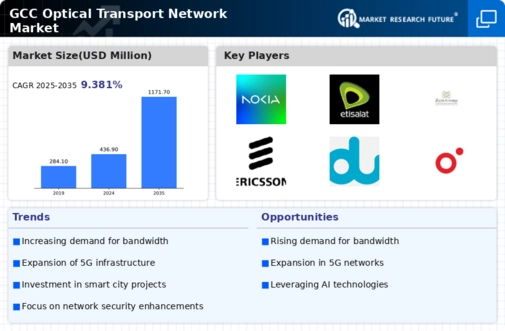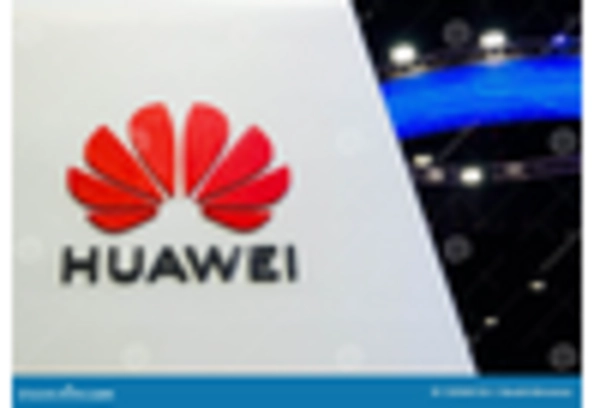Emergence of 5G Technology
The advent of 5G technology is poised to have a transformative impact on the optical transport-network market. As GCC countries roll out 5G networks, the demand for high-capacity optical transport solutions is expected to escalate. 5G technology requires a robust backbone to support its high data rates and low latency, which optical transport networks are well-equipped to provide. The market for 5G infrastructure in the GCC is projected to reach $10 billion by 2027, highlighting the potential for optical transport networks to play a critical role in this evolution. Telecommunications providers are likely to invest heavily in optical transport technologies to ensure they can meet the demands of 5G services.
Rising Cybersecurity Concerns
In the context of the optical transport-network market, rising cybersecurity concerns are prompting organizations to invest in more secure and resilient network infrastructures. As cyber threats become increasingly sophisticated, businesses in the GCC are prioritizing the protection of their data and communications. This trend is likely to drive the demand for optical transport solutions that offer enhanced security features, such as encryption and secure data transmission. The market for cybersecurity in telecommunications is expected to grow by approximately 15% annually, indicating a strong correlation between cybersecurity needs and the evolution of optical transport networks. Organizations are thus seeking to integrate advanced security measures into their optical transport systems.
Government Initiatives and Investments
Government initiatives in the GCC region are playing a crucial role in shaping the optical transport-network market. Various national strategies aim to enhance digital infrastructure, thereby fostering economic growth and innovation. For instance, the UAE Vision 2021 and Saudi Vision 2030 emphasize the importance of advanced telecommunications networks. These initiatives are likely to lead to increased public and private investments in optical transport technologies, with funding potentially exceeding $500 million in the coming years. Such investments are expected to facilitate the deployment of next-generation networks, which will enhance connectivity and support the growing digital economy in the region.
Expansion of Data Centers and Cloud Services
The optical transport-network market is being significantly influenced by the expansion of data centers and cloud services within the GCC. As organizations migrate to cloud-based solutions, the demand for robust optical transport networks to support these services is increasing. The market for data centers in the GCC is projected to grow at a CAGR of 10% through 2025, indicating a strong need for high-capacity optical transport solutions. This growth is driven by the rising adoption of cloud computing and the need for efficient data management. Consequently, optical transport networks are becoming essential for ensuring seamless connectivity and data transfer between data centers and end-users.
Increasing Demand for High-Speed Connectivity
The optical transport-network market is experiencing a surge in demand for high-speed connectivity solutions across the GCC region. As businesses and consumers increasingly rely on data-intensive applications, the need for faster and more reliable internet services becomes paramount. This demand is reflected in the projected growth of the optical transport-network market, which is expected to reach approximately $1.5 billion by 2026. Telecommunications providers are investing heavily in upgrading their infrastructure to support higher bandwidths, which is likely to drive the adoption of optical transport technologies. Furthermore, the proliferation of smart devices and the expansion of digital services are contributing to this trend, as organizations seek to enhance their network capabilities to meet customer expectations.

















Leave a Comment